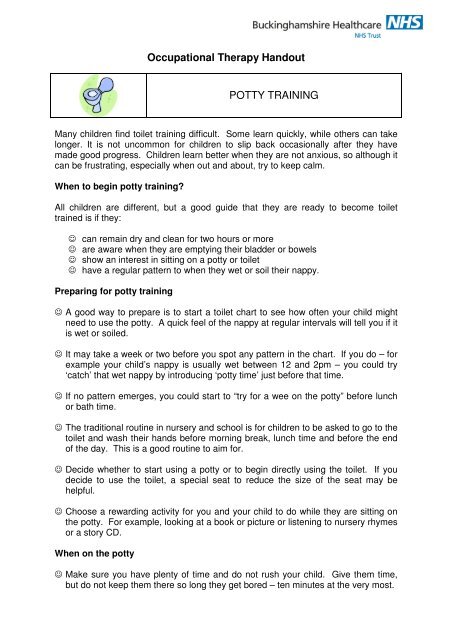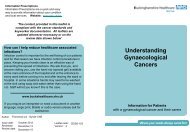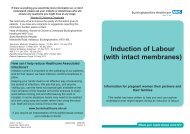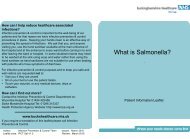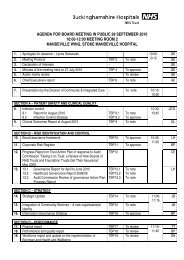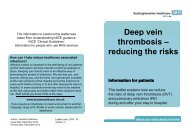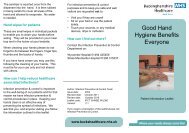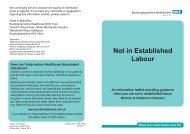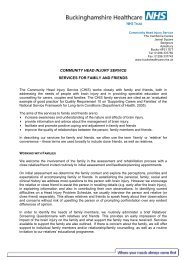Occupational Therapy Handout POTTY TRAINING
Occupational Therapy Handout POTTY TRAINING
Occupational Therapy Handout POTTY TRAINING
Create successful ePaper yourself
Turn your PDF publications into a flip-book with our unique Google optimized e-Paper software.
<strong>Occupational</strong> <strong>Therapy</strong> <strong>Handout</strong><br />
<strong>POTTY</strong> <strong>TRAINING</strong><br />
Many children find toilet training difficult. Some learn quickly, while others can take<br />
longer. It is not uncommon for children to slip back occasionally after they have<br />
made good progress. Children learn better when they are not anxious, so although it<br />
can be frustrating, especially when out and about, try to keep calm.<br />
When to begin potty training?<br />
All children are different, but a good guide that they are ready to become toilet<br />
trained is if they:<br />
☺ can remain dry and clean for two hours or more<br />
☺ are aware when they are emptying their bladder or bowels<br />
☺ show an interest in sitting on a potty or toilet<br />
☺ have a regular pattern to when they wet or soil their nappy.<br />
Preparing for potty training<br />
☺ A good way to prepare is to start a toilet chart to see how often your child might<br />
need to use the potty. A quick feel of the nappy at regular intervals will tell you if it<br />
is wet or soiled.<br />
☺ It may take a week or two before you spot any pattern in the chart. If you do – for<br />
example your child’s nappy is usually wet between 12 and 2pm – you could try<br />
‘catch’ that wet nappy by introducing ‘potty time’ just before that time.<br />
☺ If no pattern emerges, you could start to “try for a wee on the potty” before lunch<br />
or bath time.<br />
☺ The traditional routine in nursery and school is for children to be asked to go to the<br />
toilet and wash their hands before morning break, lunch time and before the end<br />
of the day. This is a good routine to aim for.<br />
☺ Decide whether to start using a potty or to begin directly using the toilet. If you<br />
decide to use the toilet, a special seat to reduce the size of the seat may be<br />
helpful.<br />
☺ Choose a rewarding activity for you and your child to do while they are sitting on<br />
the potty. For example, looking at a book or picture or listening to nursery rhymes<br />
or a story CD.<br />
When on the potty<br />
☺ Make sure you have plenty of time and do not rush your child. Give them time,<br />
but do not keep them there so long they get bored – ten minutes at the very most.
☺ Talk to your child about what you are doing. For example, say that “we are waiting<br />
for a wee-wee”. Games and activities that involve blowing, such as bubbles and<br />
whistles, will naturally encourage the stomach pushes needed to go to the toilet.<br />
A running tap might also be helpful.<br />
☺ When your child is successful, use your chosen activity as a reward. For example,<br />
give them a new book to read on the potty, or a new picture to pin up on the wall.<br />
☺ Gradually increase how often you have potty time. It is a good idea to start trying<br />
two hours before and two hours after a time that seems to be successful.<br />
Using training pants<br />
☺ Training pants are like a nappy with an elasticated waistband. They are less tightfitting<br />
than a nappy and are easier for both you and your child to pull up and down.<br />
Although many children can move straight from nappies to pants.<br />
☺ You can start using training pants at any stage once you have begun potty<br />
training. A good time to start is when you have one successful potty time every<br />
day.<br />
Other tips<br />
☺ Children may be more aware that they are wet or soiled if they are wearing pants<br />
and loose fitting clothes rather than nappies.<br />
☺ Remember, all children are different. Some need to use the potty more often than<br />
every two hours and others may be able to wait three hours or more but then need<br />
to go urgently.<br />
☺ You will need to rely on your instinct and knowledge of your child to come up with<br />
a potty training plan that suits them.


